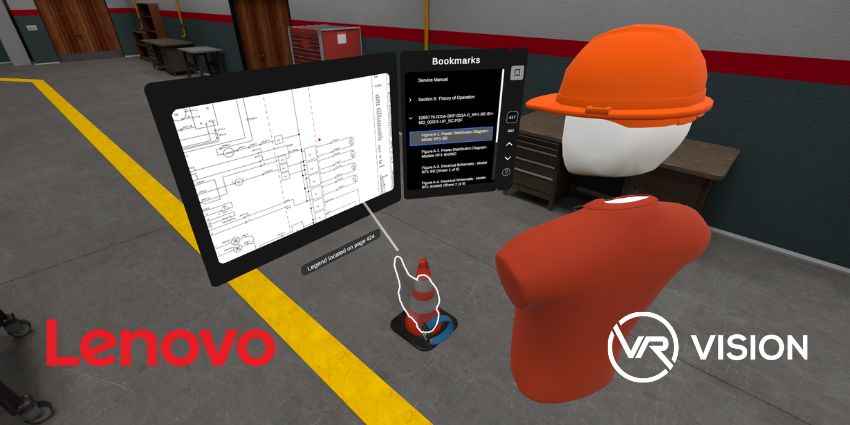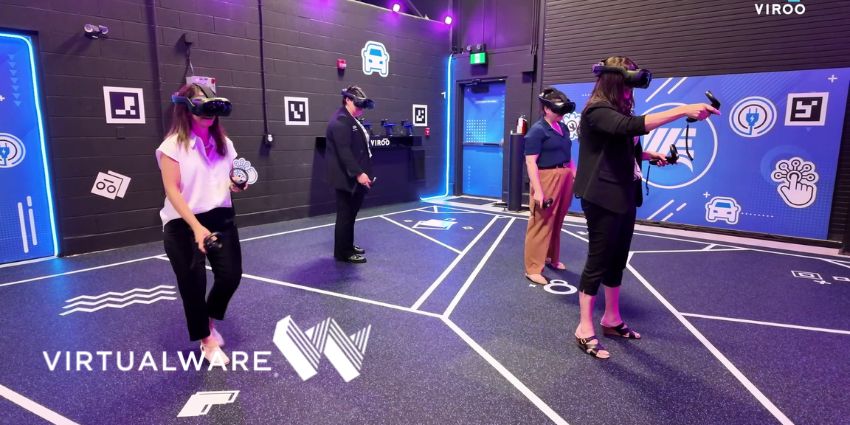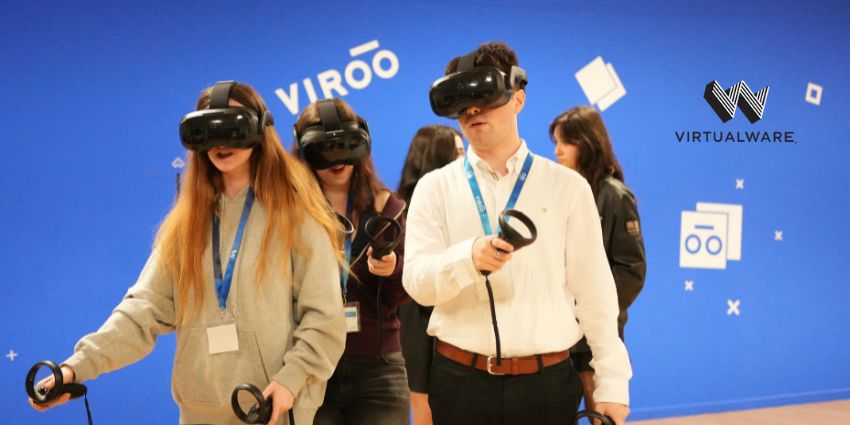Lenovo is working with partners to combine artificial intelligence and virtual reality to transform how workers learn.
Through its partnership with Canadian immersive learning company VR Vision, Lenovo is helping global enterprises deliver training that adapts to each employee in real time – a step change from the one-size-fits-all models that have dominated corporate education for decades.
The collaboration combines Lenovo’s hardware and enterprise deployment capabilities with VR Vision’s Vision Portal platform which captures and analyzes user performance data to personalize training outcomes.
Together, the two companies are developing a framework that could redefine what corporate learning looks like in industries such as manufacturing, automotive, and energy & utilities.
“We’re seeing a major shift in how enterprises think about workforce development,” says Phillip Ruenprom, Lenovo’s XR Product Manager.
Our role is to make immersive learning accessible and scalable, using AI to ensure every learner gets the right level of support and feedback.
Personalized Learning, Powered by Data
The partnership centers on a key idea: training should adapt to the learner, not the other way around.
At the core of the experience is VR Vision’s Vision Portal, a centralized platform that manages training deployment, real-time analytics, and LMS integration – enabling scalable and measurable learning impact.
These insights allow the system to adjust difficulty levels, offer additional guidance, or fast-track users who demonstrate mastery.
“If a technician struggles with a specific procedure, the AI will recognize that and tailor the next session accordingly,” explains Lorne Fade, VR Vision’s Co-Founder. “It’s like having a personal trainer inside the headset.”
The approach not only accelerates learning but also improves retention by immersing users in lifelike simulations that mimic real-world conditions. The AI backbone behind this model represents the next logical step in enterprise XR – a move from static virtual environments to dynamic, data-driven experiences.
Toyota as a Test Case
One of VR Vision’s most successful deployments has been with Toyota Material Handling, which worked with the company to implement large-scale VR training across more than 300 dealerships. Using XR headsets and software tailored to Toyota’s procedures, technicians were trained on complex mechanical systems in a risk-free virtual setting.
The results were tangible: over 10,000 employees trained and more than $1.5 million saved annually.
Beyond cost reduction, Toyota reported faster onboarding and higher performance consistency across its workforce.
For Ruenprom, examples like Toyota demonstrate the potential of combining Lenovo’s enterprise reach with AI-driven learning tools:
When you scale immersive training across thousands of users, it’s not just about content and hardware. It’s about management, security, and analytics – areas where Lenovo already has deep experience.
Making Global Training Inclusive
AI’s role extends beyond personalization to accessibility. The VR Vision platform supports AI-assisted multilingual translation, allowing employees from different regions to participate in the same training sessions in their native languages.
“Enterprises are increasingly global, and their training needs to reflect that,” says Fade. “AI translation means a worker in Japan and one in Germany can take the same course, understand it fully, and collaborate naturally.”
Lenovo’s infrastructure ensures that these experiences remain secure and standardized across continents. By integrating with device management systems such as Meta Horizon managed services, Lenovo can deploy updates, monitor headsets, and distribute content remotely – removing much of the logistical friction that once slowed down VR adoption in the enterprise.
The Next Frontier: Generative AI and Rapid Content Creation
Both Lenovo and VR Vision are also exploring how generative AI will reduce the time and cost of developing immersive environments. Today, designing a detailed VR simulation – for example, a virtual factory floor or medical lab – can take weeks of manual 3D modeling.
In the near future, AI could automate much of that work. “We’re experimenting with tools that can build environments from basic text prompts or CAD files,” Fade says. “Generative AI could allow companies to design training modules in hours rather than months.”
Ruenprom adds that Lenovo sees this as an extension of its broader AI ecosystem. “Our vision is to give enterprises the tools to create, manage, and evolve immersive content without needing deep technical expertise,” he notes.
From Data to Continuous Improvement
One of the major benefits of AI-powered VR training is the data it generates. Every interaction – from completion times to accuracy rates – becomes measurable, helping organizations identify patterns and improve their training programs over time.
“The feedback loop is incredibly powerful,” Ruenprom says. “Instead of guessing whether training works, companies can see exactly where people are succeeding or struggling. It turns learning into a continuous process.”
For industries where mistakes are costly – from aviation to energy – that precision has direct safety and performance implications.
Together, Lenovo and VR Vision are leading the next frontier of enterprise learning where immersive data transforms workforce performance into a continuous, measurable evolution.
A Shift in How Enterprises Learn
The Lenovo–VR Vision collaboration underscores a larger trend in enterprise learning: the convergence of AI, analytics, and immersive technology.
What began as experimental pilots a few years ago is now scaling into global rollouts, supported by mature hardware and software ecosystems.
“This isn’t about replacing human trainers,” Fade emphasizes. “It’s about giving them better tools – ways to personalize instruction, track outcomes, and make training more engaging.”
As enterprises seek to reskill workers in an era of automation and AI, Lenovo’s XR platform positions it as both an enabler and a bridge – connecting advanced technology with the practical needs of real-world learning.
“The future of workforce development will be immersive, intelligent, and data-driven,” Ruenprom says. “And it’s happening now.”







